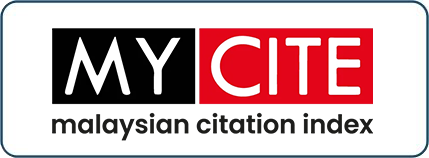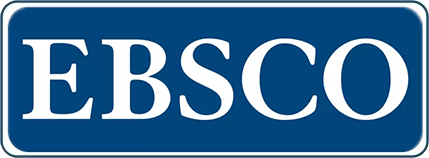Halal Food Quality: An Analysis Of Relevant Guidelines And Regulations In Malaysia
DOI:
https://doi.org/10.33102/jfatwa.vol27no2-SE.482Keywords:
Halal, Tayyiban, Food Quality, Food Guidelines, Food RegulationsAbstract
The world has seen rapid growth the development of halal food industry in recent years. At the same time, issues regarding the quality of halal food are also increasing, such as inconsistent flavours, portions, and incomplete orders. Hence, relevant halal food guidelines and regulations must also emphasise the tayyiban aspect of food. In this regard, the tayyiban aspect is related to food quality, where the guidelines and regulations must not only ensure the food is halal, but also the quality must fulfil the required standards. This paper attempts to examine existing guidelines and regulations in Malaysia related to halal food, such as the Manual Procedure for Malaysia Halal Certification (Domestic) 2020 (MPPHM 2020), Clean, Safe and Healthy (BeSS), Food Regulations 1985 (PPM 1985), Food Act 1983, Trade Descriptions Act 2011 (APD 2011), and Consumer Protection Act 1999 (APP 1999). This study utilises content analysis on documents related to the guidelines and regulations. The results of the study found that the guidelines and regulations adequately cover the essential aspects in assuring acceptable food quality. While there are areas that can be improved, overall, sufficient guidelines and regulations are already in place.
Downloads
References
Abdul, H., Azhar, A. (2014). Halalan Tayyiban dalam Kerangka Perundangan Malaysia. Jurnal Kanun:103-120.
Abdullah, A. (2012.) Makanan dan Sensori. Bangi: Penerbit Universiti Kebangsaan Malaysia.
Achmad, L. I., Irawanto, D. W. (2016). CSR for Sustaitainability: Ethics for Food Manufacturing in Indonesia Focus on Non-Tayyiban Food Additives. 15TH Anniversary Pdim Feb Universitas Brawijaya:182-195.
Aghwan, Z. A. (2018). Awareness and Demand for Halal and Tayyiban Meat Products Supply Chain. 3rd International Seminar on Halalan Thayyiban Products and Services.
Aghwan, Z. A., Bello, A.U., Abubakar, A.A., Imlan, J.C., Sazili, A.Q. (2016). Efficient Halal Bleeding, Animal Handling, and Welfare: A Holistic Approach for Meat Quality. Meat Science 121:420–428.
Akhiruddin, M.A. (2020). Bersih, Selamat dan Sihat (BeSS). http://nutrition.moh.gov.my/bersih-selamat-dan-sihat-bess/. Accessed 31 December 2021.
Al-Qardawi, Y. (1980). Al-Halal wa al-Haram fi al-Islam. Beirut: al-Maktab al-Islami.
Al-Qardawi, Y. (1995). Daru al-Qiyam wa al-Aqhlak fi Iqtisadi Islami. Kaherah: Maktabah Wahbah.
Al-Qurtubi. (1999). Al-Jami' Li Ahkam Al-Quran. Cairo: Dar al-Sya’bi.
Al-Sayuti. (1990). Methodology of Islamic Laws According to Syafii’s School of Thought. Cairo: Dar Ihya’ al-Kitab al-‘Arabiyyah.
Alzeer, J., Rieder U., Hadeed, K.A. (2018). Rational and Practical Aspects of Halal and Tayyib in the Context of Food Safety. Trends in Food Science and Technology 71(November):264–267.
Anuwar, K., Roslan, M. (2016). Keperluan Kawalan Kebersihan dalam Pemprosesan Makanan Berasaskan Konsep Halalan Tayyiban. Jurnal Penyelidikan Islam:61-78.
Arif, S., Ridzwan, A. (2011). Food Quality Standards in Developing Quality Human Capital: An Islamic perspective. African Journal of Business Management:12242-12245.
Arif, S., Sidek, S. (2015). Application of Halalan Tayyiban in the Standard Reference for Determining Malaysian Halal Food. Asian Social Science:116-129.
Ashikin, S.N., Hasan, Q. (2016). Relationship Between Halalan Toyyiban and Organic Foods. Symposium on Technology Management & Logistics (STML–Go Green), Universiti Utara Malaysia, Sintok:723-733.
Bashir, M. A.A., N. Zainol, A. M.F. Wahab. (2015). The Impact of Food Quality and Its Attributes on Consumers’ Behavioral Intention at Malay Restaurants. Theory and Practice in Hospitality and Tourism Research - Proceedings of the 2nd International Hospitality and Tourism Conference 2014 (October (2018):371–375.
Bujang, A., Noor, Z.M., Abdullah, N. (2018). An Overview of Toyyib Aspect of Halal Food Production in Meat and Meat Products. Proceedings of the 3rd International Halal Conference (INHAC 2016). Singapore: Springer:467-478.
Bujang, A., Rahman, F.A., Omar, S.R.S. (2020). Nanotechnology in the Food Processing and Packaging: An Overview of Its Halalan Tayyiban Aspect. Malaysian Journal of Consumer and Family Economics 24(S2):1–14.
Bukhari, S.N.Z., Isa, S.M., Yen Nee, G. (2020.) Halal Vaccination Purchase Intention: A Comparative Study between Muslim Consumers in Malaysia and Pakistan. Journal of Islamic Marketing:670-689.
Clean, Safe and Healthy (BeSS). (2019). Putrajaya: Kementerian Kesihatan Malaysia.
Delwiche, J. (2004). The Impact of Perceptual Interactions on Perceived Flavor. Food Quality and Preference 15(2):137–146.
Deming, W. E. (1982). Quality Productivity and Competitive Position. Cambridge: Massachusetts Inst Technology.
Ferree, M. (1918). What Is Food Quality? Journal of Education 87(6):160–160.
Hamka. (2012). Tafsir Al-Azhar. Singapura: Pustaka National Pte Ltd.
Hashim, D.M., Russly A, R., Azmi, A.A. (2017). Concept, Principles and Best Practices for the Halal Industry. Serdang: UPM Education and Training Sdn Bhd.
Hassan, S.H., Saad, N.M., Masron, T.A., Ali, S.I. (2020.) Buy Muslim-Made First – Does Halal Consciousness Affect Muslims’ Intention to Purchase? Journal of Islamic Marketing.
Ibn ‘Ashur. (1984). al-Tahrîr wa al-Tanwîr, vol. 6. Tunisia: al-Dar al-Tunisi.
Ibn Kathir. (1990). Mukhtasar Tafsir Ibnu Kathir. Mesir: Maktabah Taufiqiyyah.
Idris, S.H., Majeed, A.B.A., Chang, L.W. (2020). Beyond Halal: Maqasid Al‑Shari’ah to Assess Bioethical Issues Arising from Genetically Modified Crops. Science and Engineering Ethics, 26:1463–1476.
Ismail, W., Fabil, N., Isa, M.H.M. Ismail, R., Azizan, N. (2018). Industri Halal Teknologi dan Pengurusan Maklumat. Bandar Baru Nilai: Penerbit USIM.
JAKIM. (2020). Manual Procedure for Malaysia Halal Certification (Forth Revision) Forth.
Kannan, R. (2017.) The Impact of Food Quality on Consumer Satisfaction And Behavioural Intentions: A Study On Madurai Restaurant. Innovative Journal of Business and Management 6(03):34–37.
Kasmawati. (2014). Makanan Halal dan Tayyiban Perspektif Al-Qur’an. Tesis Sarjana, UIN Alauddin, Makassar.
Khalid, O., Hamzah, M.S, Muhammad, B.M. et al. (2006). Kamus Besar Arab-Melayu. Kuala Lumpur: Dewan Bahasa dan Pustaka.
Khan, M.I., Haleem, A., Khan, S. (2021). Examining the Link between Halal Supply Chain Management and Sustainability. International Journal of Productivity and Performance Management (April).
Law of Malaysia. (2011). Trade Descriptions Act 2011. Trade Descriptions Act 2011 (January):1–21.
Laws of Malaysia Act 281 Food Act. (2006). Laws of Malaysia Act 281 Food Act 1983:1–24.
Laws of Malaysia Act 281 Food Act. (2006.) “Food Regulations 1985”:1–123.
Mahbubi, A., Uchiyama, T., Hatanaka, K. (2019). Capturing Consumer Value and Clustering Consumer Preferences in the Indonesian Halal Beef Market. Meat Science 156 (May):23–32.
Man, S., Abidin, Z. (2014). Halalkah Makanan Kita? Batu Caves, Selangor: PTS Islamika Sdn Bhd.
Mannaa, M.T. (2020). Halal Food in the Tourist Destination and Its Importance for Muslim Travellers. Current Issues in Tourism 23 (17):2195–2206.
Mohamad,Backhouse. (2014). A Framework for The Development of Halal Food Products in Malaysia. Proceedings of the 2014 International Conference on Industrial Engineering and Operations Management:1311-1323.
Mokti, H.M., Kamri, N.A. (2020). Tayyiban dalam Konteks Penghasilan Makanan Halal: Analisis Literatur. Proceeding 4th International Seminar Halalan Thayyiban Products and Services. Bandar Seri Begawan: Unissa Press:140-158.
Molnar, P. (2009). “Food Quality Indices.” Food quality and standards II: 32.
Mustafa, I. Ibrahim, al-Zayyat, A.H., Qadir, H.A., al-Najjar, M.A (tt). Al-Mu’jam al-Wāsit. t.tp.: Dār al-Dakwah.
Namkung, Y. J. (2007). Does Food Quality Really Matter in Restaurant: Its Impact of Consumer Satisfaction and Behavioral Intentions? Journal of Hospitality and Tourism Research 31(3):387-409.
Noresahah, R. M. (Ed.). (2015). Kamus Dewan (Vol. 3). Kuala Lumpur: Dewan Bahasa dan Pustaka.
Normalina, E., Suzana, H., Rahimi, M. (2013). Halalan Toyyiban Supply Chain of the Food Industry. Journal of Emerging Economies and Islamic Research:1-12.
Osman, S., S. Ab. Rahman, A. Jalil. (2020). Issues in Halal Food Product Labelling: A Conceptual Paper. Food Research 4:214–219.
Raffi, R.M., Hasan, Q. (2019.) Food Quality and Safety in Japan: Exploring Tayyiban Aspect. Global Journal Al-Thaqafah (November):29–37.
Rohr, A., K. Luddecke, S., Drusch, M. J., Muller,R.V. Alvensleben. (2005). Food Quality and Safety – Cosumer Perception and Public Health Concern. Food Control. (16):649-655.
Saad, N.A., Ramli, M.A. (2018). Amalan Pengendalian Makanan Halalan Tayyiban. Serantau Peradaban Islam 2018, 462-472. Bangi: Institut Islam Hadhari UKM.
Saghir, A. (2014). Food Quality and Safety: A Broad Perspective. Food Processing: Strategies for Quality Assessment. 1 -8. New York: Springer-Verlag.
Salamon, H. (2021). Halalan Tayyiba: An Islamic Perspective on Healthy Food. Revista Gestão Inovação e Tecnologias 11(2):1001–1014.
Savov, A. V., G. B. Kouzmanov. (2009). Food Quality and Safety Standards at a Glance. Biotechnology and Biotechnological Equipment 23(4):1462–1468.
Selim, N.I.I., Zailani, S., Aziz, A.A., Rahman, M.K. (2019). Halal Logistic Services, Trust and Satisfaction amongst Malaysian 3PL Service Providers. Journal of Islamic Marketing.
Shafii, Z., W.S.K. (2012). Halal Traceability Framework for Halal Food Production. World Applied Sciences Journal:1-5.
Shaharudin, M. R., Mansor, S. W., Elias, S. J. (2011). Food Quality Attributes Among Malaysia’s Fast Food Consumer. International Business and Management, 2(1):198-208.
Shihab, M.Q. (2002). Tafsir al-Misbah: Pesan, Kesan dan Keserasian al-Quran. Jakarta: Lentera Hati.
Syahida, M., Man, S., Ramli, M.A. (2015). Keselamatan Makanan Menurut Perspektif Islam: Kajian Terhadap Pengambilan Makanan Berisiko. Jurnal Fiqh:1-28.
The Commissioner of Law Revision, Malaysia. (2019.) Consumer Protection Act 1999 (Act 599). (November).
Yunus, A.M, W. Chik, W.Y., Mohamad, M. (2010). The Concept of Halalan Tayyiba and Its Application in Products Marketing: A Case Study at Sabasun HyperRuncit Kuala Terengganu , Malaysia. International Journal of Business and Social Science 1(3):239–48.
Yusof, Z.M., Rashid, A., Deraman, F. et.al. (2012). Kamus Al-Quran (ed.). Batu Caves: PTS Islamika Sdn Bhd.
Zainal, Z. “Betul la tu dia kata ‘snek jimat’ tu..jimat bagi pihak KFC bukan untuk pihak pembeli..aniaya orang betol la kfc ni.”. https://theklasik.com/thats-right-he-said/10154/. Accessed 31 December 2021.
Downloads
Published
Issue
Section
License
Copyright (c) 2022 Hawwa Abdul Mokti, Nor 'Azzah Kamri, Mohd Abd Wahab Fatoni Mohd Balwi

This work is licensed under a Creative Commons Attribution 4.0 International License.
The copyright of this article will be vested to author(s) and granted the journal right of first publication with the work simultaneously licensed under the Creative Commons Attribution 4.0 International (CC BY 4.0) license, unless otherwise stated.















